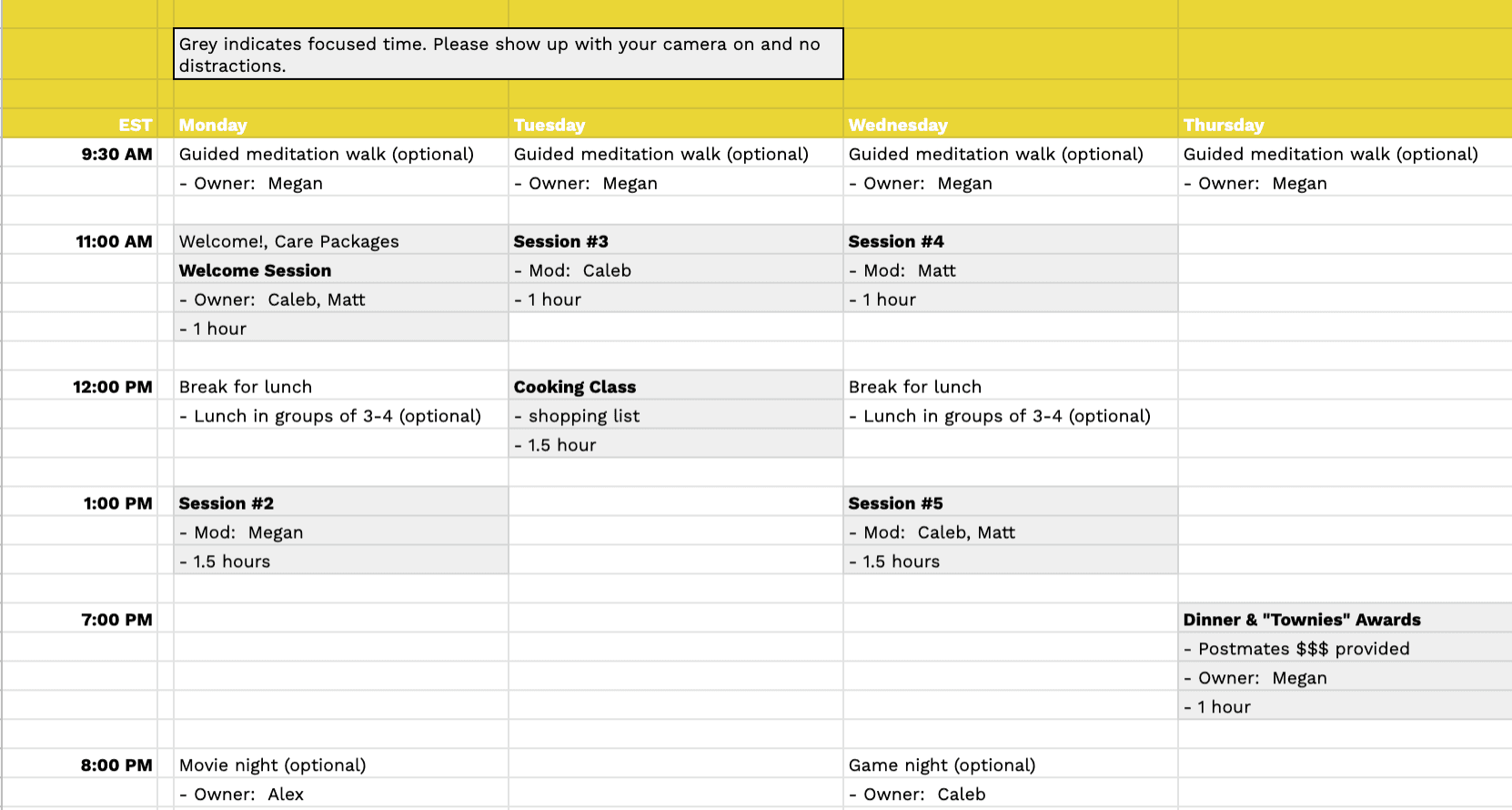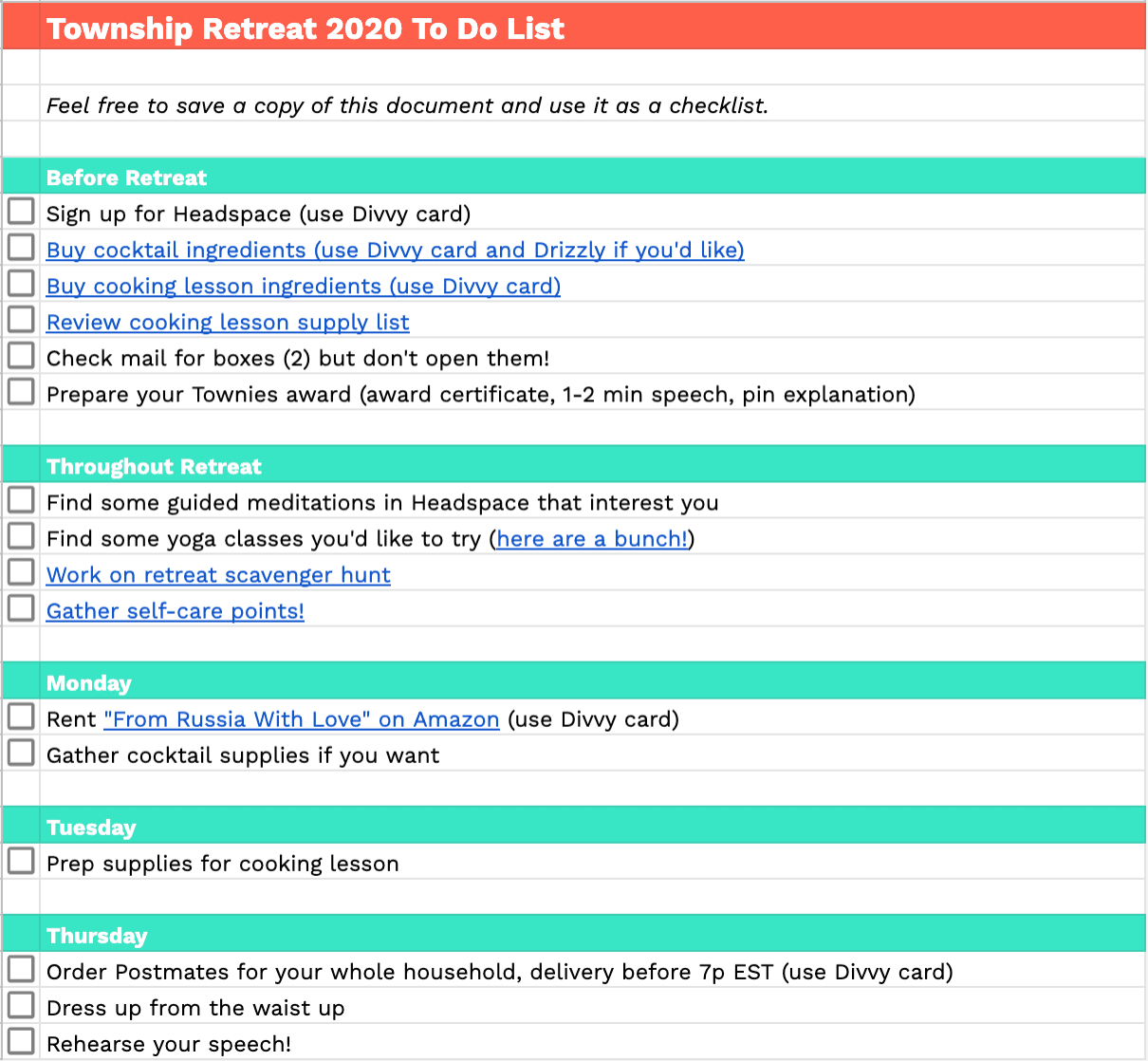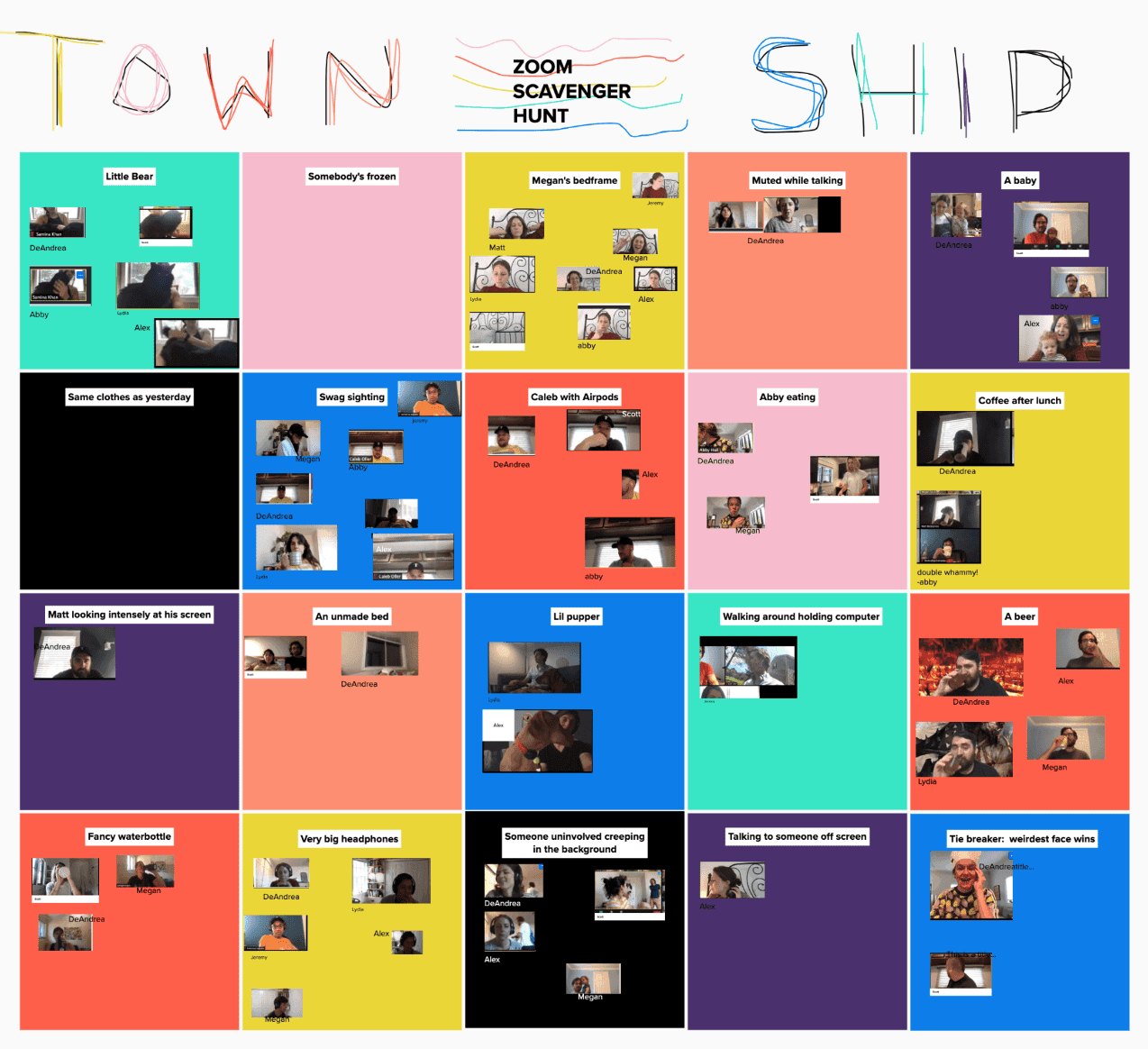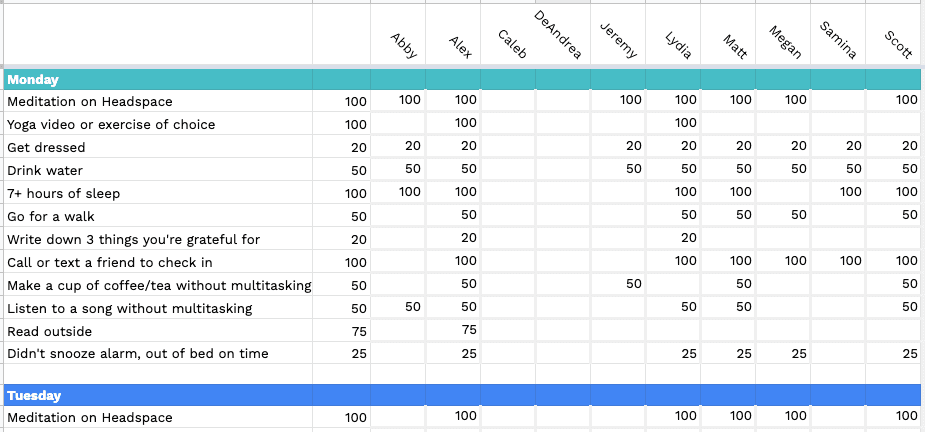
How to Plan a Remote Retreat

...or if Buzzfeed wrote this headline: “Six things you need to make your 2020 retreat great!”
Since the beginning, Township has hosted an annual retreat so our remote team can gather for some in-person bonding. It’s an event I always look forward to and I put a lot of thought into creating something special so the team feels cared for and leaves inspired. In years past we’ve gone to Denver, the Berkshires, Palm Springs, Sedona, Portland, and Providence.
Of course, this year our standard fare was not possible. There would be no fancy hotels, no stargazing, no pottery lesson, no dressing up for the ‘Townies’ awards dinner, and no gathering around a conference table to collaborate on our next chapter. And yet (perhaps more now than ever), it seemed vital for our team morale that we step out of the daily grind and find ways to reconnect. So, I got to work planning a remote retreat. I knew that it would be a challenge to create something that felt human despite the distance and the shoddy video quality. It was a bit like setting out a journey without a map or even a destination in mind.
Through the process I learned some things, in particular:
An engaging and fun remote retreat is possible.A remote retreat in no way replaces an in person one.
My first step was to poll the team to find out what they’d be missing most about our standard retreat. Starting there helped guide me towards creating an event that we’d all enjoy and felt like was a good use of our time. From there it was a lot of trial and error. Read on to learn more about the top six most impactful aspects of my planning process.
1. Create Points of Continuity
I made an effort to touch on as many familiar retreat components as possible to create continuity with years past. For example, although it’s nothing like sharing a meal across the table from friends, we all ordered Postmates together and presented our traditional “Townies” awards over Zoom. Those little touch points of familiarity were very helpful in making this look more recognizably like a retreat.
One way I tried to adapt our typical formula was by making the programming much more discussion-based than during our traditional events. The strategy here was an effort to avoid asking people to spend hours on Zoom only to listen to a few people talk. While I think the discussions made for a better experience, they had their limitations. I love to hear my teammates’ perspectives, but open group explorations don’t lend themselves to quick decision-making. When the week was over it felt a bit unfinished without the concrete takeaways that we’re used to.
If I was to plan this event again I’d find ways to share more outcomes than our discussions provided. Retreats are usually like turning the page to a new chapter at Township, and we didn’t have that experience this time. To compensate, we’ve got a Town Hall (our all-hands) planned a few weeks out during which we’ll tie up some loose ends with a presentation.
2. Be Very Thoughtful About the Retreat Schedule
If your team is used to working somewhat asynchronously, you will run into scheduling challenges, especially for those who have childcare to coordinate. We thought it would be most helpful if we grouped our core programming to one condensed section, and polled the team ahead of time to gauge what time of day would work best. We were also very concerned about not pushing our team towards Zoom burnout, so programming was fairly limited, with breaks built in to recharge. After reflecting back on this process, I’d say this is the most essential piece of advice I can share.

3. Be Clear About Your Expectations for Attendance
Township has always been fairly light on meetings, and quite loose about expectations for attendance. People show up on Zoom with or without video on, call in while walking the dog, bounce a baby on their knee, and so on. This flexibility is totally embraced, and perhaps even beloved. It has usually worked well for us for ongoing meetings like standup. For retreat week I communicated ahead of time what sessions were required vs. optional, and that attendance expectations would look a little different than normal. I asked people to show up in a quiet setting, video on, with no outside distractions, so we could make the most of our limited time.
Also be sure to plan for and communicate expectations around normal work. Will you be taking the week off of client work or limiting expectations? Of course, you will need to make this decision far ahead of time so that you can plan with your clients accordingly. For Township, it was the first time that we didn’t put all client work on hold during a retreat. Because we kept the schedule pretty light, it felt reasonable and responsible to request a minimal number of client hours per person to be completed over the course of the week, at whatever time worked best for each person. Our team reported feeling laid back because the requirements had been scaled back so much.
4. Provide Planning Materials Ahead of Time
Given that a remote retreat requires the team to adhere to more of a schedule than we’re used to, it was important that all expectations were laid out clearly, and with notice. About ten days before the retreat started, I shared a document with the team that outlined all relevant information and required prep to set the team up for success at the start of our week together. The document included things like:
The schedule, including required and optional eventsA to do list for before and during retreatA shopping list to prepare for our group activities (most important were ingredients for our cooking lesson)Instructions for the competitions we had throughout the week
This document was made as a checklist that everyone could make their own copy of and work off of. Because this list was well-organized and thorough, I didn’t get a barrage of questions leading up to the events, and we had 100% success with people showing up with what they needed on the right day.

5. Create Fun and Competition
At a normal retreat, we tend to dedicate more time to fun than we do to programming. Providing opportunities for fun was one of the most challenging aspects of putting this event together remotely. We all know by now that playing games online can feel a bit gimmicky, if not completely sad, and living on Zoom for an entire week was out of the question. We landed on a few activities that were in the sweet spot for us: a good blend of competition with an opportunity for trolling.
A movie night: we voted ahead of time on movie + cocktail combos and landed on From Russian With Love and martinis. We all watched the movie together and made fun of how mind blowingly sexist and also hilarious this movie was. We had a great time and plan on hosting another one soon.A game night: A few of our teammates relished the opportunity to introduce the rest of the team to Dungeon & Dragons. They created characters for all of us, based loosely on caricatures of ourselves, and took us through a quick one-off one-evening campaign.A cooking class: lucky for us, one of our teammates was a chef in a former life. We spent an hour cooking together over Zoom under his instruction.Zoom scavenger hunt: I put together a scavenger hunt in which we all collected screenshots of various sightings in Zoom. The results were funny, and in general this concept was very fun. I’d recommend it for a remote retreat, or even if you’re just looking for a bit of fun for your team. Winner got a bottle of fancy olive oil.

Self-care competition: in what has been described as “the most Township thing ever,” we found a way to turn self-care into a competition where participants could earn points by engaging in various self-care activities each day. The winner at the end of the week got a pair of fancy slippers.

6. A Care Package Doesn’t Hurt
Okay, yes, I love to give a gift. Admittedly, one of my favorite parts of retreat planning is putting together gifts for our team. This year, since we’re missing out on the luxury of staying in a nice hotel and we wanted to signal to our team that we value their wellbeing, I put together care packages for everyone and we opened them all together on the first day of our retreat. The box included things like a robe, a candle, a handmade mug, a notebook, snacks, Township shirt and tie dye kit, and more.
And there you have it. Our retreat was fun and I’m so glad we took a chance on this unusual plan. That doesn’t mean it didn’t leave me even more excited about the time we’re all able to gather together again, but this was a nice way to get us through the waiting period.